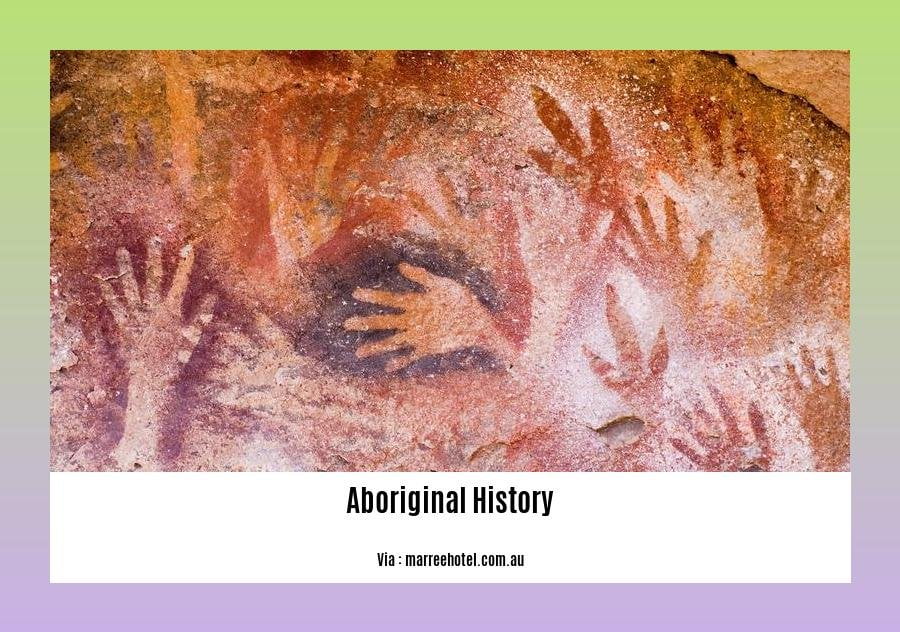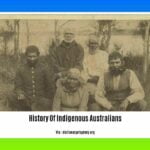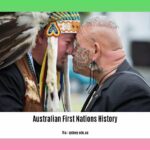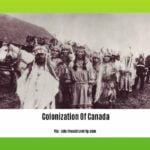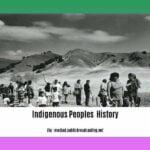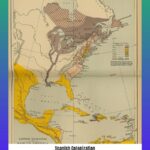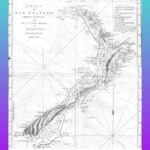Embark on an enlightening journey into [Uncovering the Tapestry of Aboriginal History: A Journey into Indigenous Cultures and Experiences]. Delve deep into the rich and often untold stories of indigenous communities, unraveling their traditions, challenges, and resilient spirits.
Key Takeaways:
- Indigenous Australians have inhabited the continent for 45,000-50,000 years, with origins in Southeast Asia.
- European invasion in 1788 brought disease, dispossession, and oppression.
- Pre-invasion culture was rich in spirituality, culture, and resistance.
- Introduced diseases decimated the indigenous population.
- Indigenous Australians faced ongoing oppression and displacement after colonization.
Aboriginal History
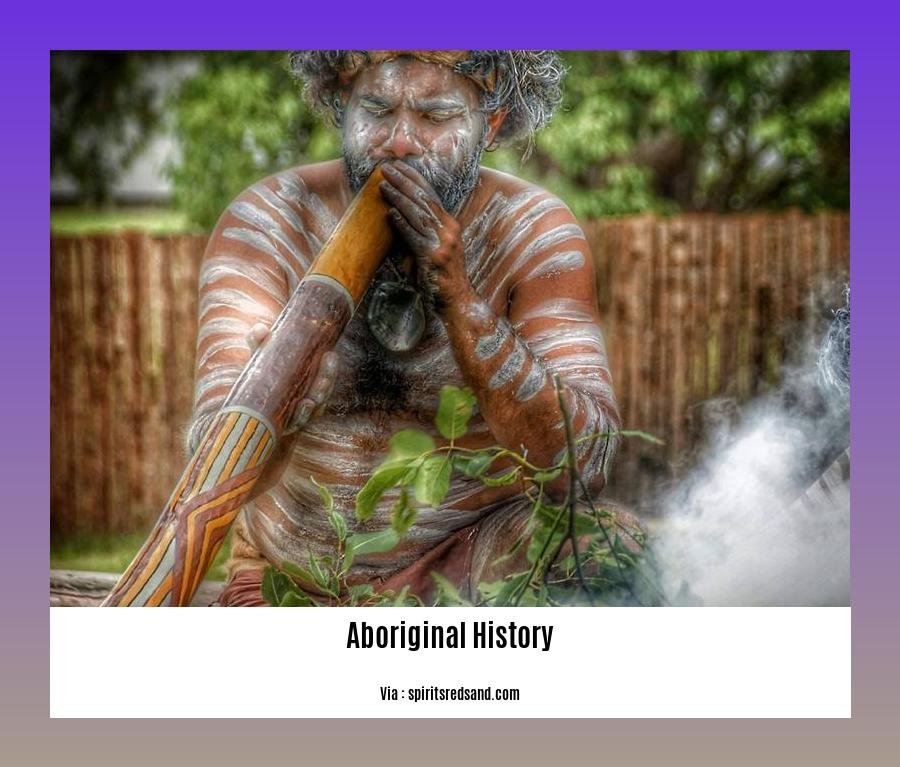
For millennia, the aboriginal people of Australia have woven a vibrant tapestry of culture, traditions, and resilience. Their story is a testament to the enduring spirit of human connection to the land and a reminder of the challenges faced by indigenous communities around the world.
Ancient Origins and Arrival
Aboriginal Australians have called this continent home for over 45,000 years, with evidence suggesting their ancestors migrated from Asia via Southeast Asia. They developed a deep understanding of the land and its resources, establishing intricate social structures and spiritual beliefs.
European Invasion and its Aftermath
In 1788, European colonizers arrived, marking a turning point in aboriginal history. The invasion brought diseases, dispossession, and oppression. Forced into an unfamiliar world, aboriginal people faced a drastic decline in population and cultural disruption.
Resilience Amidst Oppression
Despite the challenges, aboriginal communities have maintained their cultural identity and connection to the land. They have fought for their rights, preserved their traditions, and forged a path towards reconciliation and self-determination. Their resilience serves as an inspiration for indigenous communities worldwide.
Unveiling the Tapestry
Exploring aboriginal history is an ongoing journey that requires respect, understanding, and a commitment to truth. By delving into their rich cultural heritage, we gain a deeper appreciation for the diversity and resilience of human societies.
Their story is one of survival, adaptation, and the enduring power of the human spirit. As we continue to uncover the tapestry of aboriginal history, we honor their legacy and contribute to a more just and inclusive society.
history of indigenous australians is a fascinating topic.
Learn more about the indigenous peoples’ history in Australia.
Explore the australian first nations history to gain insights into the rich cultural heritage of the First Nations people.
Aboriginal Resistance and Resilience
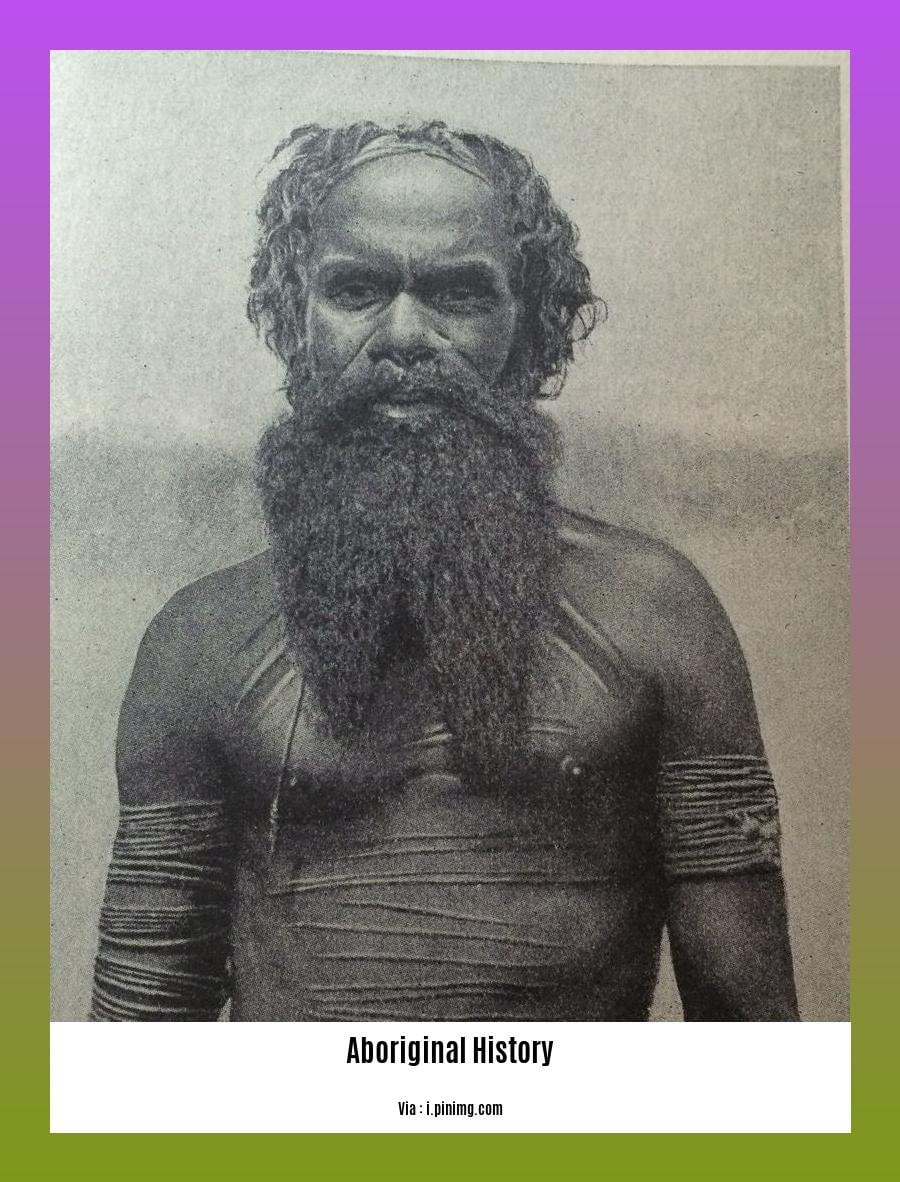
Indigenous Australians have endured centuries of adversity, yet their resistance and resilience have been integral to their survival and empowerment.
Historical Resilience
Aboriginal cultures have weathered oppressive policies and harmful practices like dispossession and forced removal, maintaining their identity and traditions. Their deep connection to the land, cultural practices, and spiritual beliefs served as anchors during tumultuous times.
Political Resistance
Aboriginal peoples have actively resisted domination through political activism and advocacy. Organizations like the Aboriginal Legal Service and the National Aboriginal Conference have fought for land rights, self-determination, and cultural recognition.
Cultural Resilience
Indigenous art, music, and dance have been powerful tools for cultural expression and resistance. These art forms showcase the richness and diversity of Aboriginal cultures and challenge dominant narratives.
Contemporary Forms of Resilience
Today, Aboriginal resistance continues through Land Rights advocacy, environmental stewardship, and community-based initiatives. Indigenous knowledge and perspectives are increasingly valued in decision-making, fostering a more inclusive society.
Key Takeaways:
- Aboriginal resistance and resilience have been central to their survival and empowerment.
- Indigenous peoples have weathered adversity through historical resilience, political resistance, and cultural resilience.
- Contemporary forms of resilience include advocacy, environmental stewardship, and community-based initiatives.
- Recognizing and valuing Aboriginal perspectives fosters a more inclusive and just society.
Relevant URL Source:
The Impact of Colonization and Government Policies
Colonization and government policies have left an indelible mark on Indigenous communities, shaping their history, culture, and present-day experiences.
A Common Thread of Oppression
Across the globe, Indigenous populations have endured the profound impact of colonization. From Canada’s residential schools to Australia’s Stolen Generations, these policies sought to assimilate Indigenous peoples into dominant societies, often at the cost of their languages, traditions, and identities.
Health and Socioeconomic Disparities
Colonization and government policies have disproportionately affected the health and socioeconomic well-being of Indigenous populations. Systemic barriers persist in healthcare access, housing, education, and employment opportunities.
Cultural Erosion and Trauma
The forced removal of children from their families and communities has caused intergenerational trauma and cultural loss. Traditional practices, languages, and spiritual beliefs have been suppressed, leading to a fragmented sense of identity.
Key Takeaways:
- Colonization and government policies have marginalized Indigenous peoples from mainstream society.
- These policies have had a devastating impact on Indigenous health, socioeconomic welfare, access to healthcare, and culture.
- Indigenous peoples in Canada and other Indigenous populations worldwide share a common history of being colonized.
Citation:
- The Impact of Colonization and Western Assimilation on Health and Well-being of Indigenous Peoples in Canada
Contemporary Issues and Indigenous Rights
Although we have made significant progress toward a more just and equitable society, contemporary issues continue to impede the full realization of Indigenous rights. These challenges underscore the urgent need to address the ongoing social and economic disparities and to ensure that the rights of Indigenous peoples are upheld.
Discrimination and Marginalization
Indigenous communities often face discrimination and marginalization in various aspects of life, including employment, housing, and education. The long-term effects of colonialism and assimilation policies have contributed to these disparities. Addressing these challenges requires a multifaceted approach that tackles systemic barriers and promotes equality and inclusion.
Land Rights and Native Title
Land rights and native title are crucial issues for Indigenous peoples. The connection to their traditional lands is central to their cultural identity and spiritual well-being. Ensuring that Indigenous peoples have secure rights to their ancestral lands is essential for their self-determination and economic empowerment.
Health Disparities
Indigenous populations experience significant health disparities compared to non-Indigenous populations. Factors such as poverty, lack of access to healthcare, and intergenerational trauma contribute to these disparities. Addressing health inequities requires culturally appropriate and holistic approaches that focus on prevention, early intervention, and community empowerment.
Cultural Revitalization and Language Preservation
The preservation and revitalization of Indigenous languages and cultures are vital for maintaining cultural identity and promoting intergenerational transmission of knowledge. Supporting Indigenous communities in their efforts to preserve their languages and traditions is crucial for fostering a sense of cultural pride and continuity.
Key Takeaways:
- Contemporary issues faced by Indigenous peoples include discrimination, land rights, health disparities, and cultural revitalization.
- Addressing these challenges requires a collective effort to promote equality, inclusion, and self-determination.
- Recognizing and upholding Indigenous rights is essential for a just and equitable society that respects diversity and cultural heritage.
Relevant URL Source:
The Australian Human Rights Commission: The challenge of protecting the human rights of Indigenous peoples
FAQ
Q1: How long have Indigenous Australians inhabited the continent?
A1: At least 45,000-50,000 years, originating from Asia via Southeast Asia.
Q2: What was the impact of European invasion on Aboriginal populations?
A2: It brought diseases, dispossession, and oppression, leading to a significant decline in population.
Q3: How did pre-invasion Aboriginal culture differ from the post-invasion era?
A3: Prior to invasion, Aboriginal culture was rich in spirituality, resistance, and traditions, which were significantly impacted by the arrival of Europeans.
Q4: What forms of resistance have Indigenous Australians employed throughout history?
A4: Aboriginal and Torres Strait Islander peoples have demonstrated resilience and resistance, valuing collective history, community connections, and activism.
Q5: What challenges do Indigenous Australians face today?
A5: Ongoing oppression, discrimination, poverty, and health disparities remain significant challenges for Indigenous peoples in Australia.
- China II Review: Delicious Food & Speedy Service - April 17, 2025
- Understand Virginia’s Flag: History & Debate - April 17, 2025
- Explore Long Island’s Map: Unique Regions & Insights - April 17, 2025
